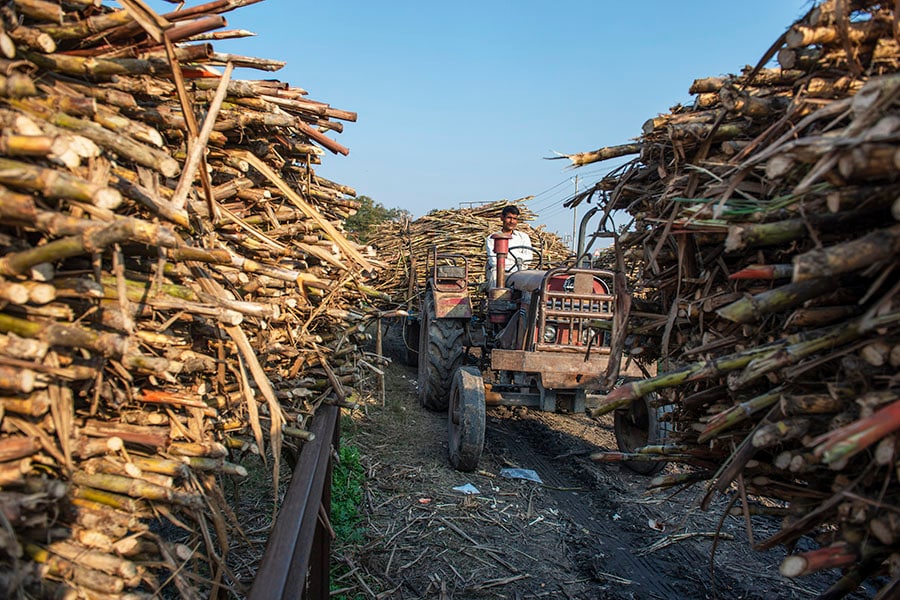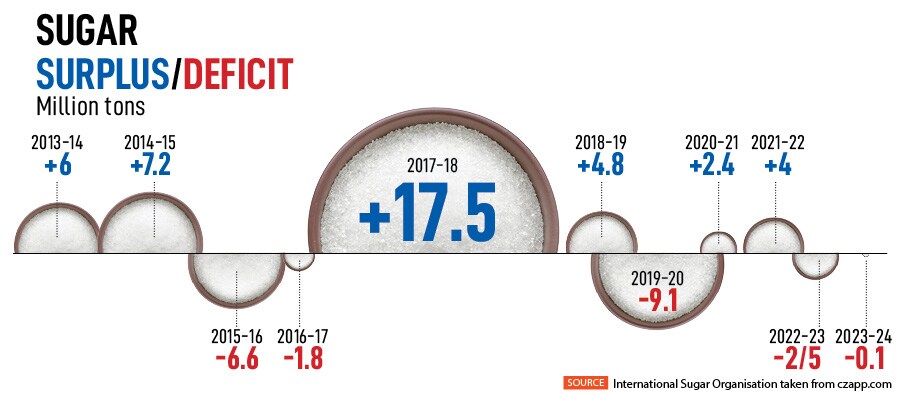
Explainer: Is there a looming sugar shortage?
While sowing data shows increased planting of sugarcane, the weather and global factors may play spoilsport for the Indian farmer, leaving consumers with higher prices
 A sugarcane farmer is seen in a queue waiting to sell harvested sugarcane outside at Baghpat Cooperative Sugar Mills ltd, Baghpat, Uttar Pradaesh. Image: Pradeep Gaur/SOPA Images/LightRocket via Getty Images
A sugarcane farmer is seen in a queue waiting to sell harvested sugarcane outside at Baghpat Cooperative Sugar Mills ltd, Baghpat, Uttar Pradaesh. Image: Pradeep Gaur/SOPA Images/LightRocket via Getty Images
Why are there expectations of a sugar shortage?
India is the world’s largest consumer, with consumption at 27.5 million tonnes. While the acreage under sugarcane cultivation has been increasing, about 4.5 million tonnes is also used for ethanol production. This is against a production forecast of 31.7 million tonnes for 2023 by the Indian Sugar Mills Association. As a result, the supply situation in the domestic market is expected to remain tight.
In addition to this, the monsoon in August was a washout in sugar producing states like Uttar Pradesh, Maharashtra, Karnataka and Tamil Nadu. Now it remains to be seen how the winter crushing season, which starts from late October, progresses.

Global prices surge to 11-year high
Globally also production has been affected on account of the El Niño weather pattern. Global production is expected to be 178.8 million tonnes while consumption is expected at 178.9 million tonnes. In Brazil a longer wet season has caused a decline in production so far this year, while in Thailand farmers prefer to plant cassava as it is more remunerative than sugarcane. While production has hovered between 170 and 180 million tonnes a year globally, of the last decade it is demand that has steadily increased causing the market to remain in a tight equilibrium. Since 2013-14, consumption has increased from 164.5 million tonnes to 178.9 million tonnes. Given this, prices have risen steadily in 2023 from 25.9 US cents per pound, the highest since 2011.
Also read: Rain watch for September 21-27: Monsoon at fag end, pulses sowing lags





